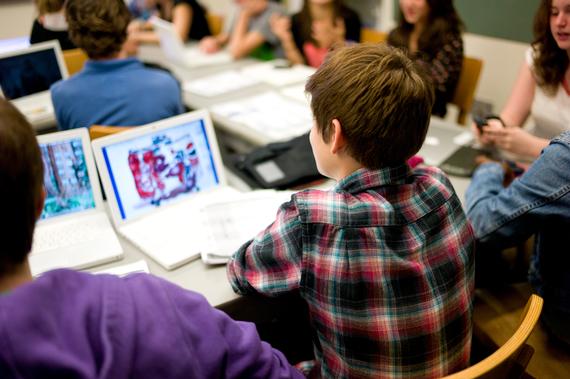 In the spring of 2015, I took the online course "Teaching To Kill a Mockingbird." It was the first time I was reading To Kill a Mockingbird with my 8th grade students and I was looking for support to help me teach such an important text. What I gained from the course was so much more than I could’ve imagined. I received access to primary sources to illustrate the realities of the Jim Crow South; I participated as a learner in activities that I later assigned to my students; and I learned about virtual resources I could implement in multiple lessons and units.
In the spring of 2015, I took the online course "Teaching To Kill a Mockingbird." It was the first time I was reading To Kill a Mockingbird with my 8th grade students and I was looking for support to help me teach such an important text. What I gained from the course was so much more than I could’ve imagined. I received access to primary sources to illustrate the realities of the Jim Crow South; I participated as a learner in activities that I later assigned to my students; and I learned about virtual resources I could implement in multiple lessons and units.
Here are three online tools I experienced in the Teaching Mockingbird course that I’m now using in my classroom:
Zaption: While students enjoy watching videos, they often watch passively and don’t engage with the content in a meaningful way. Zaption is a tool that allows teachers to create interactive lessons or “tours” by embedding images, text and questions right into the video. Students can respond right in the moment, which allows them to gain a deeper understanding of a particular video segment. I used Zaption to help students create historical background knowledge by closely watching videos that connect to texts that we read in class. This proved to be a useful tool when introducing our Holocaust unit featuring the memoir Night. I created a Zaption tour for students and they completed the homework assignment over the weekend. I was amazed at the level of engagement they displayed on Monday morning. Facing History even has some ready-made Zaption tours that teachers can copy and use in their own classrooms!
Padlet: Big chart paper is a very common way to allow students to share ideas and respond to each other about a variety of topics and content. Padlet is a virtual paper or wall where teachers and students can post photos, videos, and text for students to view. Little sticky notes can be created by students to post their answers and comments. I used Padlet for students to respond to quotes from texts that we’ve read and then respond to each other’s thoughts. I incorporated this activity into our reading of Of Mice and Men, asking students to examine the text to determine the loneliest character. Everyone else’s comments are easily viewable and the discussion can happen on devices in the classroom or at home!
Wordle: Virtual “word clouds” can be created through Wordle. Colors, fonts, layouts and designs are arranged by the user to highlight words or ideas of importance. These images can be printed or posted on blogs or websites (like this one that was done for Red Scarf Girl, written by Ji-li Jiang). My students created identity charts for themselves and a character as we read To Kill a Mockingbird, and at the end of the text they created a Wordle for the character’s identity chart. They carefully chose the color scheme to reflect a thematic idea related to the character and they presented their thinking to classmates.
See how you can add to your teaching toolbox by signing up for our online courses. Courses start June 9 – Register today!

